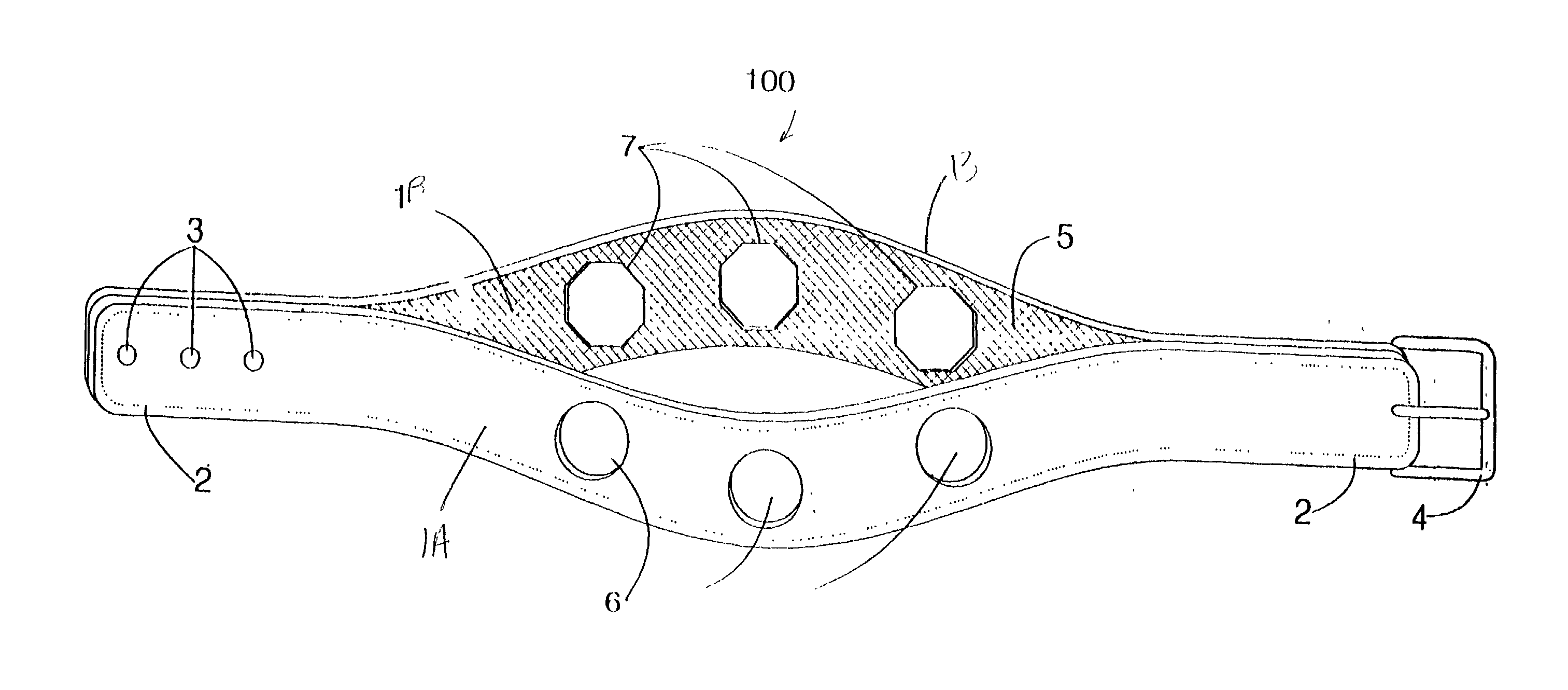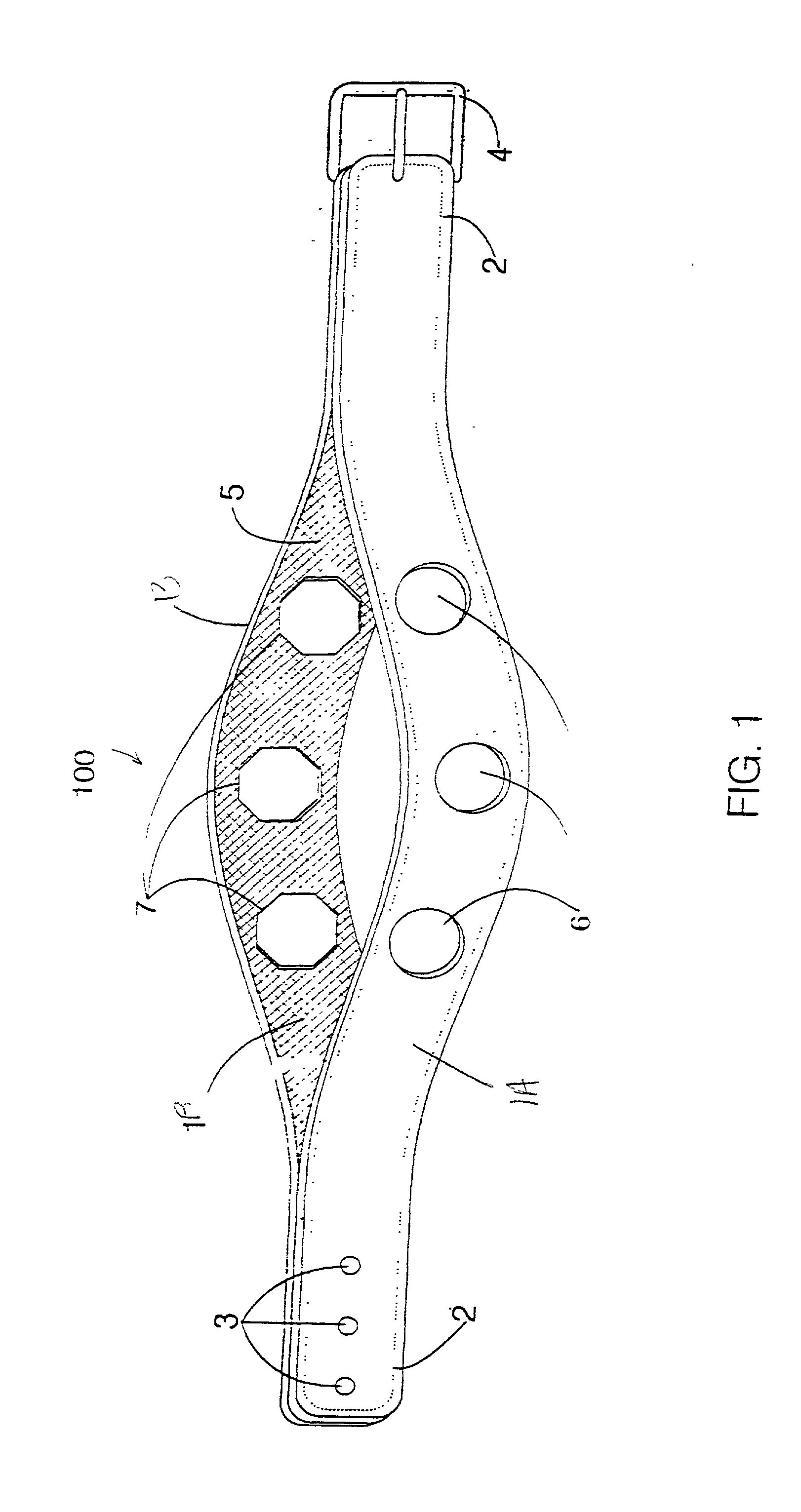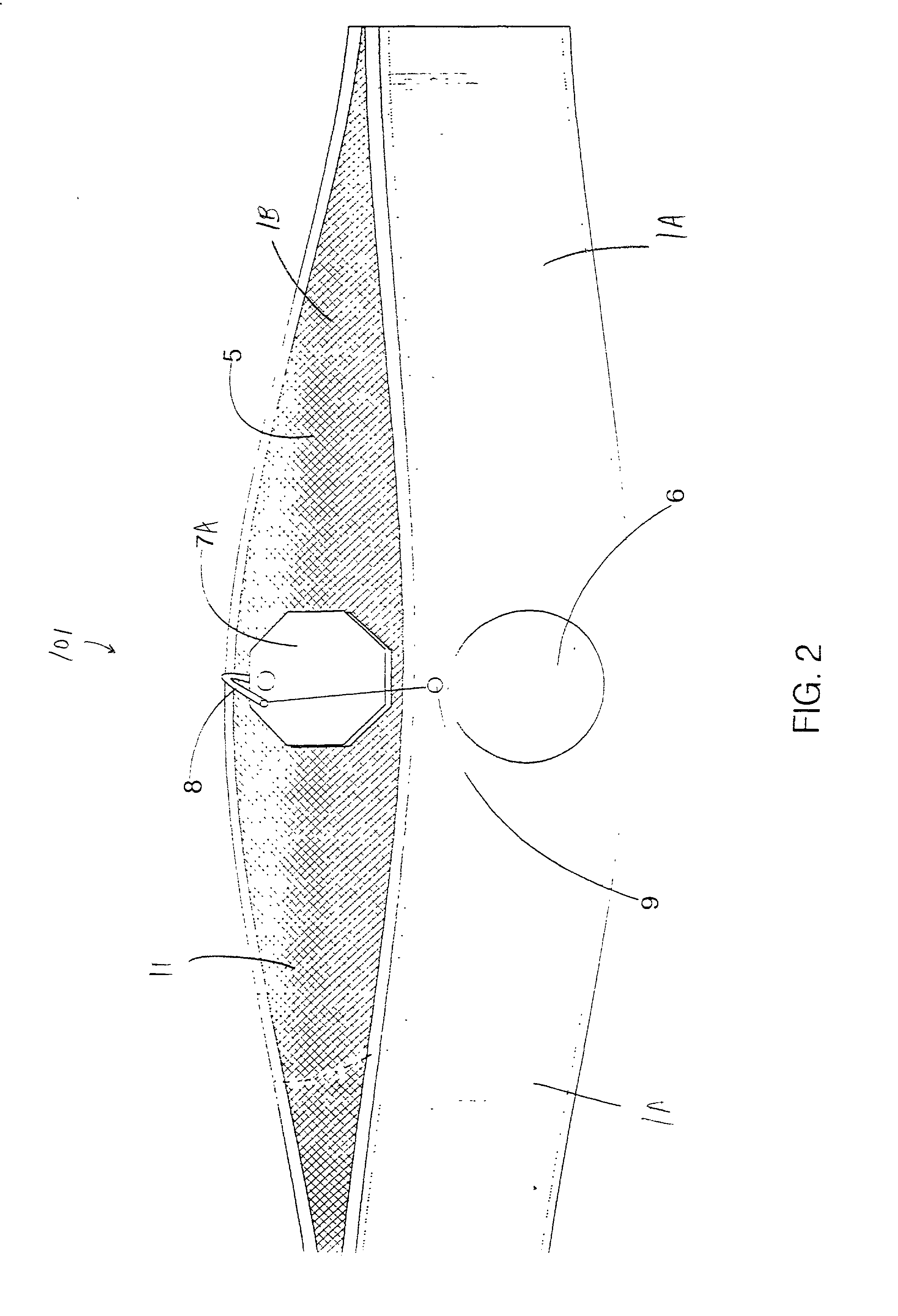Animal collar with integral identification holders
a technology for identification holders and animal collars, applied in the field of animal collars, can solve the problems of difficult access for reading, jingling noise when the animal is jingling, and the inability to securely hold the tags,
- Summary
- Abstract
- Description
- Claims
- Application Information
AI Technical Summary
Benefits of technology
Problems solved by technology
Method used
Image
Examples
Embodiment Construction
[0016] FIG. 1 shows the preferred embodiment of a collar 100 according to the present invention. The collar 100 comprises a band made of an outer layer 1A and an inner layer 1B. The inner layer 1B and the outer layer 1A can be made of any durable, yet flexible material, such as, but not limited to, woven nylon, leather, canvas, or some other durable, yet flexible material. The outer and inner layers 1A, 1B are abutted back to back and stitched together at joinder sections 2 in a manner such that the layers at a central portion 13 of the collar band remains separable. The inner surface of one of is the outer and inner layers 1A, 1B is lined with the "hook" portion of the hook-and-loop fastener, while the other layer is lined with the "loop" portion. Preferably, adhesive-backed hook-and-loop fastener is used, but such fastener material 5 can also be stitched or affixed by other means to the collar 100.
[0017] The outer layer 1A of the collar features a plurality of punched-out sections...
PUM
 Login to View More
Login to View More Abstract
Description
Claims
Application Information
 Login to View More
Login to View More - R&D
- Intellectual Property
- Life Sciences
- Materials
- Tech Scout
- Unparalleled Data Quality
- Higher Quality Content
- 60% Fewer Hallucinations
Browse by: Latest US Patents, China's latest patents, Technical Efficacy Thesaurus, Application Domain, Technology Topic, Popular Technical Reports.
© 2025 PatSnap. All rights reserved.Legal|Privacy policy|Modern Slavery Act Transparency Statement|Sitemap|About US| Contact US: help@patsnap.com



